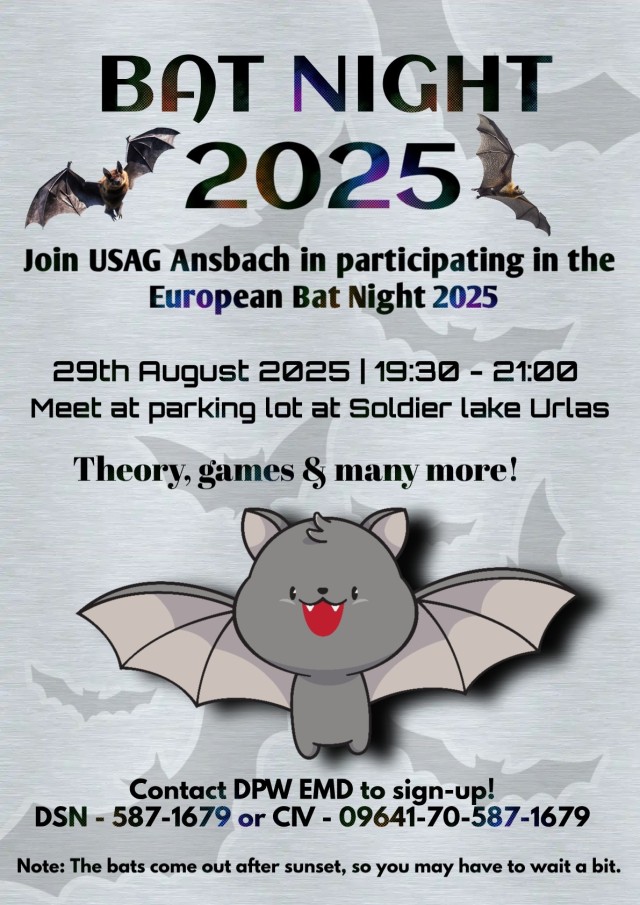
ANBSACH, Germany — Did you know that USAG Ansbach is home to 16 different bat species?
Every one of them is strictly protected under German Environmental law and twelve are even on the red list of threatened and endangered species.
Bats see with their ears and fly with their hands — something which they have done for more than 50 million years!
Today more than 1,200 bat species can be found throughout the world.
In Germany, bats are small and rarely larger than 5cm. They are known for their pointed, sometimes very large ears and all species, without exception, have a densely furred coat. They have very small, black eyes and an extremely elastic skin called “flight skin” that is stretched between the strongly elongated fingers, arm bones, neck, hind legs and even the tail. It provides the animals with the necessary lift as they move their wings up and down at high-speed making them excellent flyers, capable of amazing maneuvers and the only mammals that can actively fly.
Bats in Germany are insectivores. They only eat insects and are great for keeping bugs away from crops. In some regions, bat species can even reduce the need for pesticide sprays due to their large food demand.
In other areas of the world, bat species eat fruits, nectar, frogs, small birds, fish and animal blood. The bats take over the task of birds in the night, when they catch all kinds of insects in their fast-paced flight sometimes covering more than twenty kilometers (12 miles) to reach their hunting grounds.
Bats are of great ecological significance as pest killers due to their large food demand and adaptation to nocturnal insect hunting. They consume about 30% of their body weight each night.
For our smallest German bat, the common pipistrelle (Die Zwergfledermaus), which weighs about 6 grams, this equals 1.5 grams of insects per night. For the record, a mosquito weighs about 0.00225 grams, which is equivalent to 667 mosquitoes per night and more than 140,000 in one season (7 months)!

Throughout August and September, it can happen that bats fly into our buildings. There is no reason to panic. The animals only got lost in their search for new quarters. The common pipistrelle especially tends to fly into rooms. With folded wings, it is smaller than a thumb. Most are inexperienced youngsters that fly through tilted windows.
If you find bats in the building during the day, you should open the windows wide in the evening and see if the bats will find their way out by themselves. Afterwards the building should be searched for animals that may not have flown out.
Bats like to hide in the folds of curtains, behind pictures or in vases that can trap them. If they are not found in time they dry out and starve to death. To avoid this entirely do not leave any building windows tilted overnight unless they have a fly screen.
Contact the USAG Ansbach Environmental Management Division if you need assistance removing bats from your home: CIV 09641-70-587-1629 or DSN 587-1629.


Social Sharing